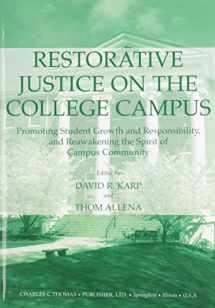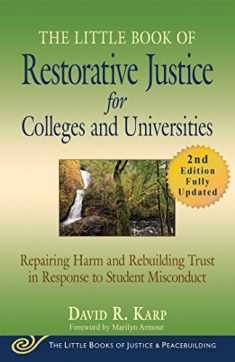
Restorative Justice on the College Campus: Promoting Student Growth and Responsibility, and Reawakening the Spirit of Campus Community
Book details
Summary
Description
Restorative community justice is a new response to criminal incidents. It has quickly become an international movement with programs proliferating particularly in the United States, Canada, Great Britain, Australia, and New Zealand. It has become the dominant model guiding juvenile justice practice in the U.S. and is increasingly used in K-12 school communities and for adult criminal sanctioning. Restorative community justice can be defined as an alternative to punishment that focuses on holding offenders accountable by having them (a) accept and acknowledge responsibility, (b) seek to repair the harm they caused to victims and communities, and (c) work to reduce the risk of re-offense by building positive social ties to the community. The book has four sections. The first provides an overview of restorative justice and an evaluation of contemporary practices in student judicial affairs. The second section introduces the major restorative practices: accountability boards, conferencing, and victim offender mediation/dialogue. Each chapter that describes a practice is followed by a case study illustrating how the models have been used. The case studies not only illustrate best practices but also identify obstacles and issues to consider. The third section identifies particular problem areas from binge drinking to plagiarism to date rape, with the authors providing an overview of the nature and prevalence of each problem, and again case studies follow for illustration. The final section of the book includes an epilogue that speculates on the promise of restorative justice for the current generation of students and their particular set of assets and challenges. No other publication provides such an up-to-date overview of college student misbehavior. This book will be an excellent resource to student affairs professionals, especially campus judicial officers and ornbudspersons, and may be used along with other training materials for volunteers in restorative programs.


We would LOVE it if you could help us and other readers by reviewing the book
Book review


![Reframing Campus Conflict [OP]: Student Conduct Practice Through a Social Justice Lens](https://booksrun.com/image-loader/235/https:__m.media-amazon.com_images_I_41WUweXuHoL._SL500_.jpg)


